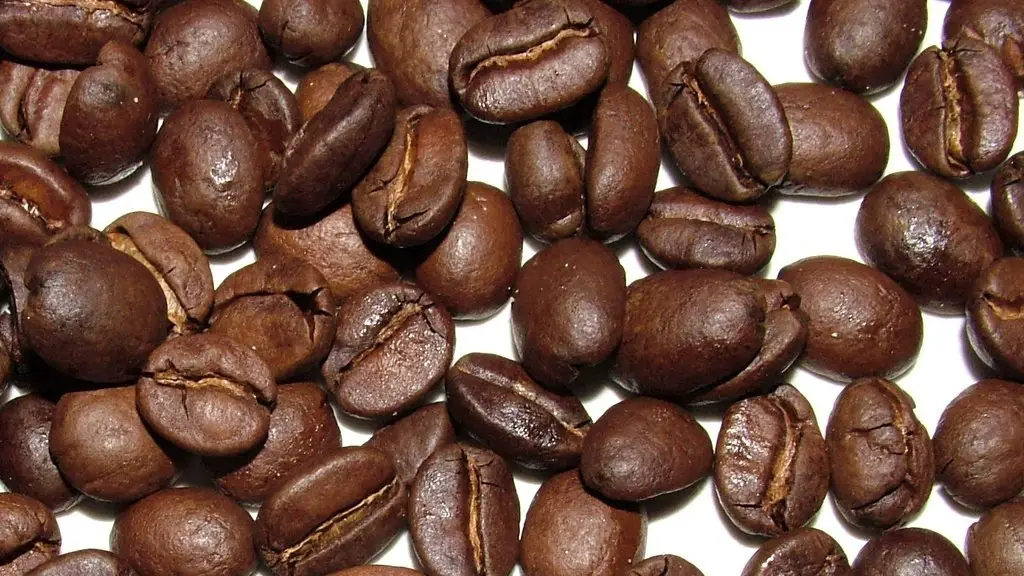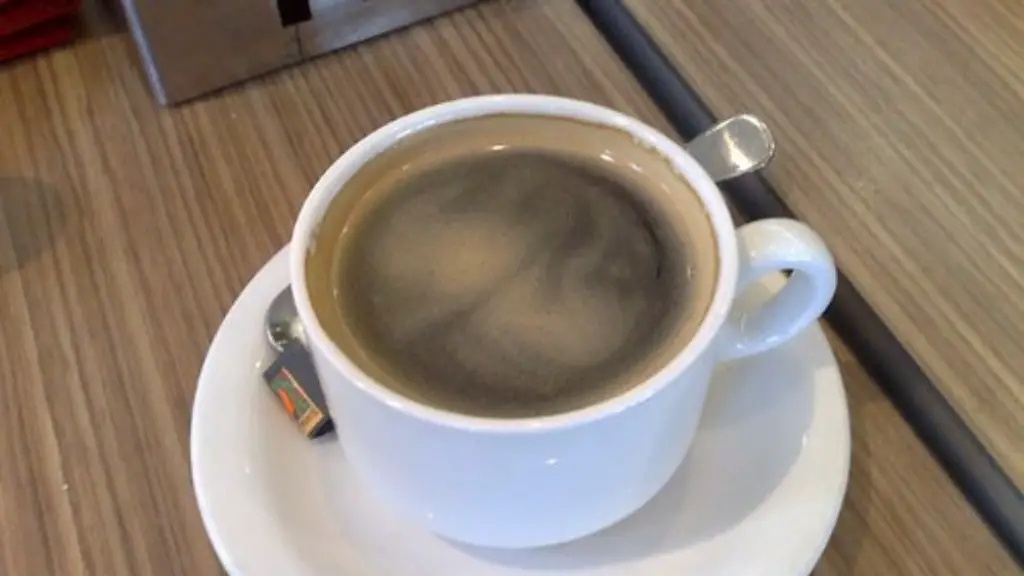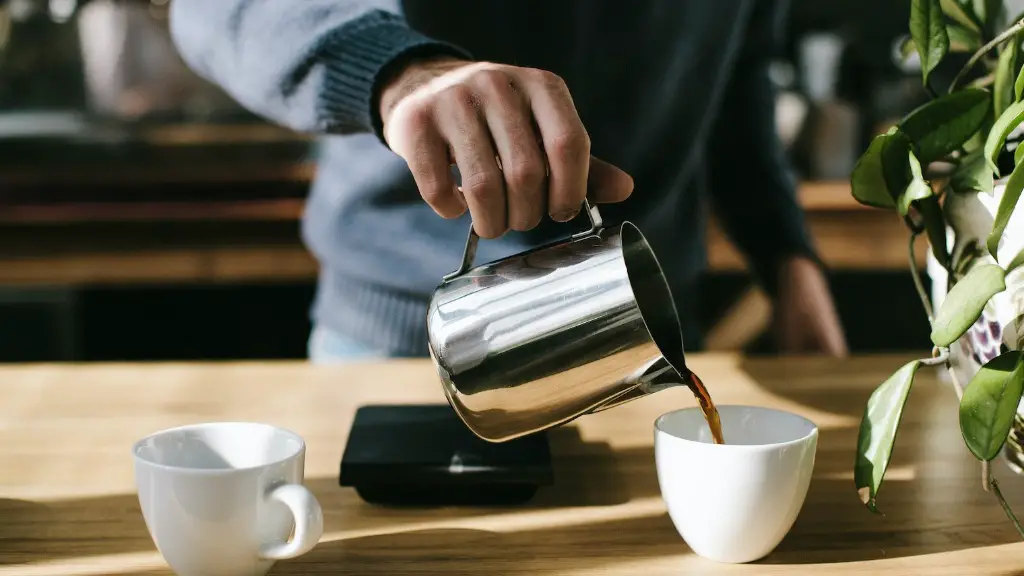Starbucks Frappuccino coffee drinks are a hugely popular line-up of blended drinks found at Starbucks. But do they contain caffeine? That’s a question that comes up frequently whenever the topic of Starbucks and its offerings come up. In this article, we’ll dive into what exactly is in a Frappuccino drink and look at the different types available, as well as potential caffeine content.
So, what is a Frappuccino? The popular coffee house chain defines its Frappuccino as a “blended beverage” that is made of “premium coffee and real milk”. It can come either as a coffee drink or a creamy milkshake. It also is an iced drink, with flavors ranging from mocha, to coffee, to cream, to fruity.
When the iced drink was first launched in 1995, it was composed mostly of coffee and ice. This is still true today to some extent. Frappuccinos today, however, may contain some dairy, like cream or milk, plus sweeteners, flavors and/or even fruit. Depending on the exact ingredients, the caffeine content in any given Frappuccino is likely to vary.
The base coffee used for Frappuccinos is actually Starbucks’ Frappuccino Roast, specially created for the blended beverages. It has a mellow, sweet and light taste and it does contain caffeine, with each 12-ounce cup containing 140 mg. One of the most popular Frappuccinos is the Coffee Frappuccino, which is a blended beverage made with Starbucks Frappuccino Roast, milk and sugar.
The amount of caffeine in a Frappuccino beverage will depend on the size of the drink, milk and/or cream used, and any additional flavors or sweeteners that go into it. Without knowing all the specifics of what goes into it, it’s impossible to say how much caffeine is in a given Frappuccino. The general consensus, however, is that most Frappuccinos will contain somewhere between 75 and 150 mg of caffeine, depending on how much coffee is used and the size of the drink.
When it comes to caffeine, there are a few things to consider. The first is the amount of caffeine a person should have in a day. According to the World Health Organization, an adult should not have more than 400 mg of caffeine a day. This means that any Frappuccino larger than 12 ounces may push that limit. The second is the source of the caffeine in the beverage. Caffeine found in coffee and tea, for example, is generally considered to be a natural and healthier source.
Low Caffeine Frappuccino Alternatives
If you are looking for a Frappuccino with less caffeine, there are some suitable options, including decaf coffees or cappuccinos made with skim or non-fat milk, as the reduced fat can lower the amount of caffeine. Some of the lighter flavored Frappuccinos, such as vanilla or mocha, can also have significantly lower caffeine levels. Diluting the Frappuccino further, by adding more ice or non-fat milk, may help reduce the caffeine content further.
Finally, there are Frappuccino-style drinks that don’t contain any caffeine. Starbucks offers several flavored beverages, such as the Strawberries & Crème Frappuccino and the Caramel Cream Frappuccino, made with real fruit, milk, and syrup. Non-coffee Frappuccinos, such as these, still produce the same smooth and creamy consistency of the classic coffee-based Frappuccino, with a fraction of the caffeine.
Caffeine Content in Other Coffee Drinks
Fappuccino beverages are not the only coffee drinks that contain caffeine. Hot coffee, such as an Americano or latte, for example, contain significantly more caffeine than a Frappuccino. A 12-ounce cup of a hot coffee made with brewed espressobeans has 215 mg of caffeine. Canned coffee drinks can contain up to 310 mg of caffeine. And espresso shots, which are often found in many types of coffee drinks, have 77 mg of caffeine in each 2-ounce shot.
In comparison, a cup of decaffeinated coffee still contains up to 7 mg of caffeine and can vary depending on the roast and brewing method. The caffeine content of decaf coffee is significantly less than that of caffeinated coffee, but it is still present, so it is important to take into account when considering caffeine intake.
Recommendations
When it comes to caffeine, moderation is key. Caffeine can be beneficial when consumed in small quantities with a balanced diet, but too much can lead to insomnia, anxiety, and other issues. If a person is concerned about their caffeine intake from Frappuccinos, they should look for decaf or non-coffee alternatives, or opt for small sizes. Those looking for a bigger caffeine kick should consider a traditional hot coffee.
Health Benefits of Starbucks Frappuccino
In addition to the caffeine in coffee and Frappuccinos, they can also contain other beneficial compounds. Coffee and coffee drinks, including Frappuccinos, are a rich source of antioxidants. Antioxidants are compounds that can help fight cell damage and can also help protect against certain diseases, such as cancer and heart disease.
Frappuccinos, in particular, can contain healthy ingredients like skim or non-fat milk, which are excellent sources of calcium and potassium. The added fruits and flavors also provide nutrients, such as vitamin C and beta carotene. The added syrups and whipped cream can add extra calories and sugar, however, so it is important to pay attention to the ingredients and the size of the drink when considering the nutritional value.
Environmental Impact of Frappuccino
Most Frappuccino drinks come in a paper cup with a plastic lid and straw. The plastic straws that come with Frappuccinos have been the focus of recent scrutiny from environmental activists. Starbucks has announced plans to move away from plastic straws and switch to compostable straws in all of its stores by 2020.
In addition to the environmental impact of the straws, the production of Frappuccinos also has an environmental footprint. The dairy used in the drinks is sourced mostly from cows and can contribute to deforestation and other environmental impacts. The dairy, as well as the plastic straws and lids, is also not very recyclable and often ends up in landfills.
Final Thoughts
Starbucks Frappuccino drinks can contain anywhere from 75 to 200 mg of caffeine and come in endless variations, from the classic Coffee Frappuccinos to the fruity and creamy varieties. Those concerned about their caffeine intake should take into account the size of the drink, as well as what ingredients and sweeteners are used. There are also lower and non-caffeine alternatives, such as decaf coffee and non-coffee Frappuccinos. While consumption should be moderate, Frappuccinos can also provide other nutritious benefits. In addition, the environmental impact of the packaging should be taken into account.




